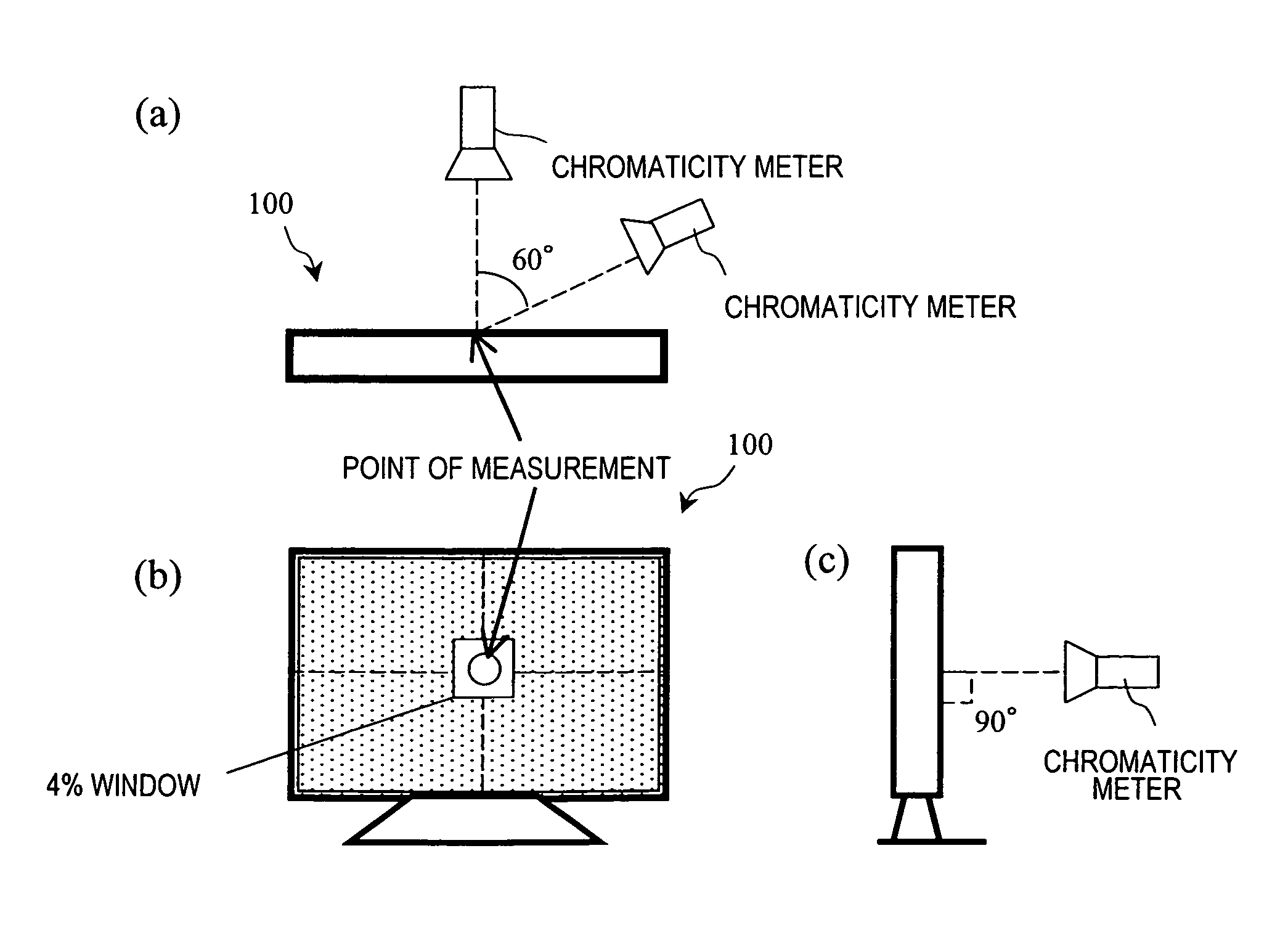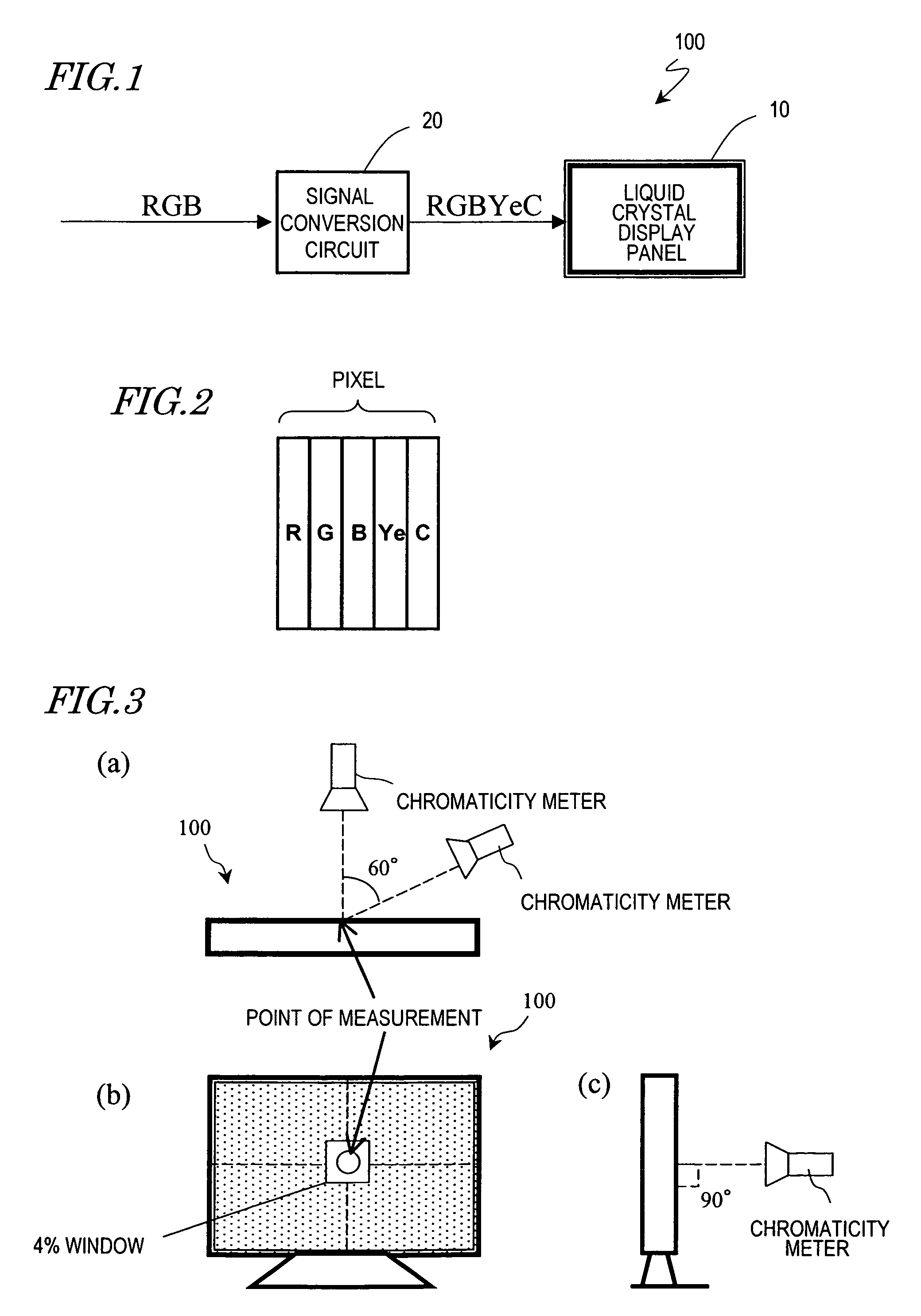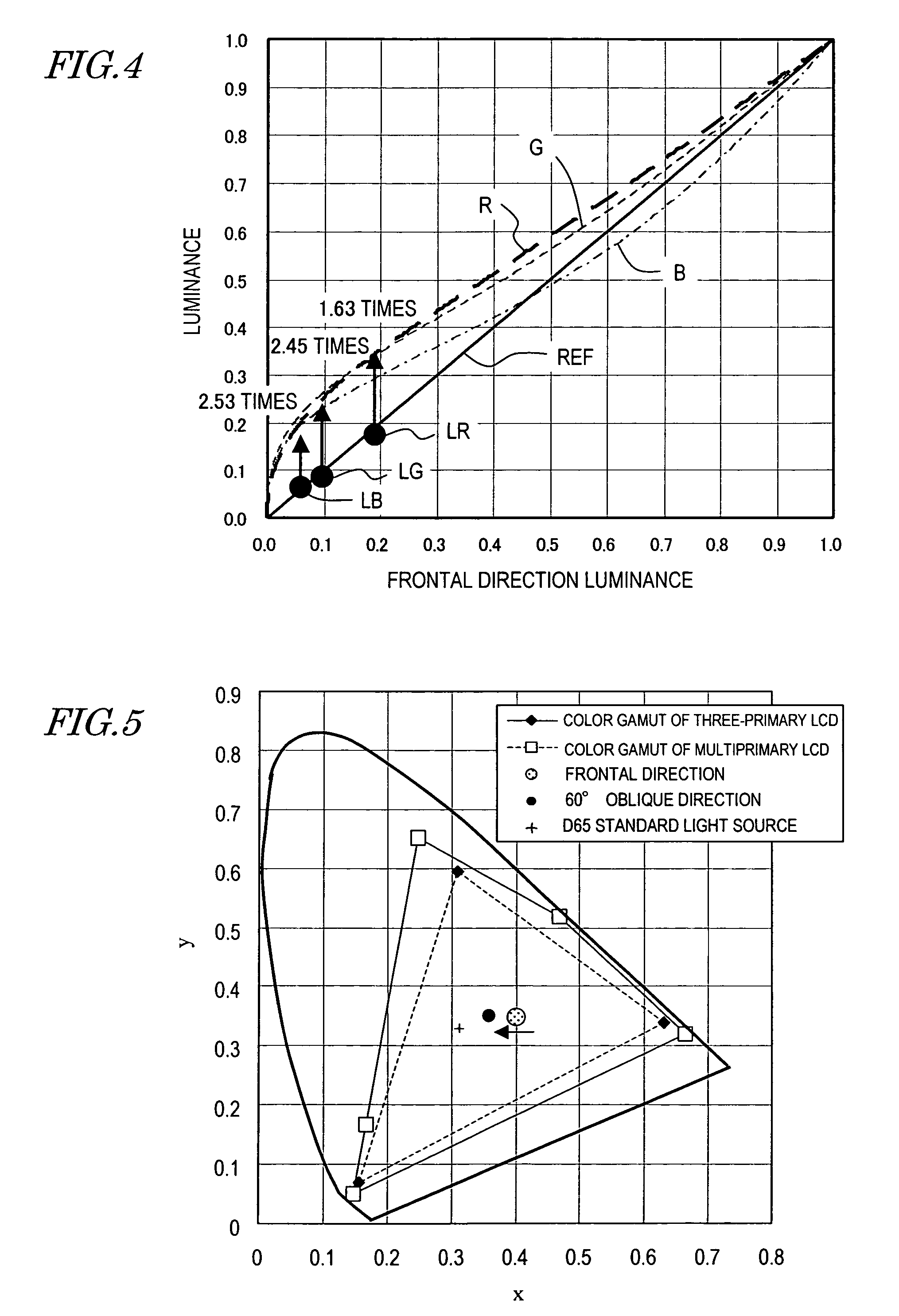Signal conversion circuit and multiple primary color liquid crystal display device with the circuit
a conversion circuit and circuit technology, applied in static indicating devices, instruments, individual semiconductor device testing, etc., can solve the problem that primary colors cannot display some objects, and achieve the effect of suppressing hue and chroma due to whitening (viewing angle dependence of characteristics)
- Summary
- Abstract
- Description
- Claims
- Application Information
AI Technical Summary
Benefits of technology
Problems solved by technology
Method used
Image
Examples
Embodiment Construction
[0042]Liquid crystal display devices of the TN (Twisted Nematic) mode and the STN (Super Twisted Nematic) mode, which have conventionally been commonly used, have a disadvantage of a narrow viewing angle, and various display modes have been developed to improve this.
[0043]As display modes having improved viewing angle characteristics, the IPS (In-Plane Switching) mode disclosed in Japanese Examined Patent Publication No. 63-21907, the MVA (Multi-domain Vertical Alignment) mode disclosed in Japanese Laid-Open Patent Publication No. 11-242225, the CPA (Continuous Pinwheel Alignment) mode disclosed in Japanese Laid-Open Patent Publication No. 2003-43525, and the like are known.
[0044]In the aforementioned display modes, high-quality displaying is realized with a wide viewing angle. Recently, however, as a problem regarding viewing angle characteristics, a problem has newly emerged in that there is a difference between the γ characteristics when observed from the front and the γ characte...
PUM
 Login to View More
Login to View More Abstract
Description
Claims
Application Information
 Login to View More
Login to View More - R&D
- Intellectual Property
- Life Sciences
- Materials
- Tech Scout
- Unparalleled Data Quality
- Higher Quality Content
- 60% Fewer Hallucinations
Browse by: Latest US Patents, China's latest patents, Technical Efficacy Thesaurus, Application Domain, Technology Topic, Popular Technical Reports.
© 2025 PatSnap. All rights reserved.Legal|Privacy policy|Modern Slavery Act Transparency Statement|Sitemap|About US| Contact US: help@patsnap.com



